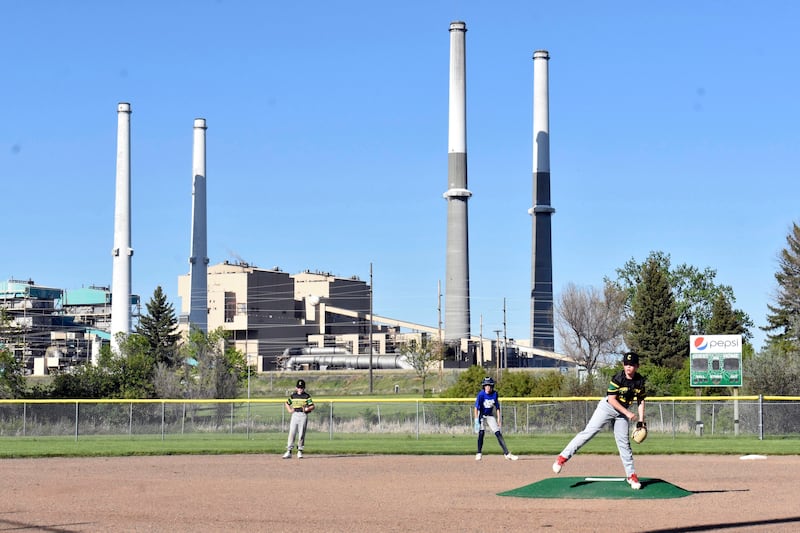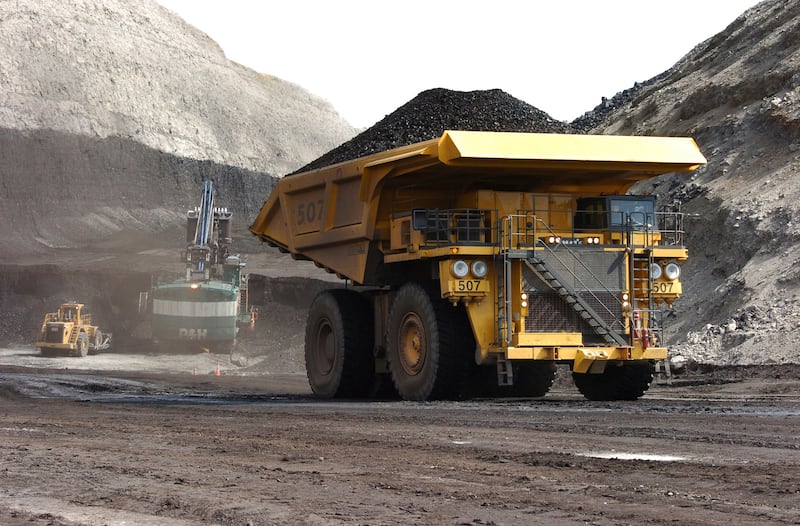- The U.S. voted to use the Congressional Review Act to overturn land-use management plans in Alaska, Montana and North Dakota.
- It would be first time the CRA has ever been applied to any resource management plan or environmental review process.
- Conservationists warn it could spark years of confusion and chaos for any land-use plan put in place since 1996.
Land-use plans are not generally subject to congressional review. Despite the scale of the regulatory burden required, those exhaustive, sometimes years-long processes stop short of such high-level governmental oversight.
That was until this month, however, when the U.S. House of Representatives voted to invoke the Congressional Review Act of 1996, a tool that allows Congress to rescind executive agency actions, across several bills overturning three established land-use decisions.
The congressional delegations from Alaska, Montana and North Dakota are celebrating victory over what they understand to be the Biden administration’s political approach to land-use planning.
“This is what the Congressional Review Act exists to do, to pull back on agencies that are rogue,” said Rep. Julie Fedorchak, R-N.D., who sponsored one of the three bills. “There’s no other way to describe this process.”
But legal scholars and activists describe it differently.
They fear that this use of the CRA could reshape public land management by unleashing a wave of chaotic litigation and confusion for years to come.
“These bills are such a terrible idea,” John Ruple, a research law professor at the University of Utah, wrote in an email to Deseret News.
“This is not about whether the management requirements contained in the challenged plans are a good idea. This is about whether order is preferable to chaos.”
Along with 30 other legal scholars from across the country, Ruple signed a letter sent to Senate leadership in stark opposition to the legislation.
“While we take no position on the substantive provisions in the plans at issue, we strongly urge Congress to avoid the harmful precedent and unintended policy consequences of invalidating RMPs (Resource Management Plan) or Forest Plans through the CRA,” read the letter.
“While only three RMPs are presently under consideration, hundreds of federal land management plans nationwide may be implicated. The resulting uncertainty could trigger an endless cycle of litigation, effectively freezing the ability of the BLM and other agencies to manage public lands for years, if not decades to come.”
Ivan London, a senior attorney at Mountain States Legal Foundation, reiterated the sentiment. He said that the uncertainty and potential lawsuits would be like “the Wild West.”
Unintended consequences?
In order for the Congressional Review Act to be used, the legal framework has a few clear requirements. Whatever is being reviewed must be submitted to Congress before it is allowed to be enacted, and it also must be established as a “rule,” a term with a vague definition.
As such, the three land-use plans under consideration needed to be established as “rules” before Congress could invoke the CRA, which the Government Accountability Office did earlier this year.
Lawyers and activists, though, find the notion that rules need to be considered before they are “in effect” most concerning.
The CRA states in its first line that “before a rule can take effect, the federal agency promulgating such rule shall submit to each House of the Congress and to the comptroller general a report.”
The vast majority, if not all, RMPs and land-use plans have never submitted a report to Congress.
If land-use plans are now eligible to be considered “rules” reviewable by Congress and the Government Accountability Office, but have never been submitted, their enforceability might be uncertain. It also raises a question about whether any established and in-operation RMPs are legally binding.
“The concern is that any land-use plan that’s been finalized since 1996 may not be in effect right now,” said Aaron Weiss, deputy director of the Center for Western Priorities, a conservation advocacy group.
“That could have far-reaching implications for oil and gas leases issued pursuant to these plans, or grazing allotments that have been issued pursuant to these post-1996 plans, or renewable energy rights-of-way, recreation and conservation designations, etc.”
Even if the possible outcomes of these pieces of legislation are speculative at this point, the bill has moved to the Senate for consideration. The legal underpinning creates ample space for anyone who has ever had contention with a land-use plan to take legal action, according to the lawyers’ letter to congressional leaders.
“Permits and approvals for oil and gas development, transmission lines, mining plan approvals, livestock grazing, rights of way (for pipelines, power lines, roads, and other infrastructure projects), timber harvest, and other commercial uses could all be subject to challenge if the underlying RMP has not been submitted to Congress,” reads the letter.
By filtering out just one of those categories, the scale of concern becomes more clear.
“In Utah, we are talking about 577,000 acres of oil and gas leases issued since the CRA passed. All of those are suddenly suspects,” Weiss said. “If someone wanted to go and challenge them, it opens the door. In Wyoming, 1.2 million acres. Across the West, you’re looking at 2.9 million acres (of oil and gas leases).”
“What is a regulated entity supposed to do,” Ruple wrote, “when the rules of the game have been set on fire?”
What is the intention of the law?

The law that was passed focuses specifically on three resource management plans that were decided near the end of the Biden administration in Alaska, Montana and North Dakota.
They were affecting the Central Yukon in Alaska, which includes the Ambler Road project, the Powder River Basin coal deposits in Montana (and Wyoming) and underground mineral rights in North Dakota.
Each underwent a contentious planning process, garnering regional and national attention. Ultimately, the Biden administration’s BLM review prioritized conservation over natural resource extraction in all three cases.
According to Fedorchak, the North Dakota plan all but stopped energy companies from accessing any of the state’s oil and natural gas reserves.
“The plan would have restricted access to leasing on 4 million acres of federal coal — that’s nearly 99% of the state’s federal coal acreage," she said. “And 213,000 acres of federally owned fluid minerals, so oil and gas — 44% of the mineral acres."
It is due to the checkerboard parcelling of land in the state, she pointed out, that prevented natural resource consideration from making sense. By blocking public parcels from natural resource leasing, there was no way a company could build and run infrastructure and also make money.
“The BLM’s efforts here, we don’t know what they were trying to do, other than, quite honestly, trying to prohibit the development of coal, oil, and gas in our state,” Fedorchak said. “It was just a backdoor attempt to shut down fossil fuels.”
As for any of the concerns that were brought up by conservation groups and legal scholars, she pointed out how the bill is specific in its focus.
“It only applies rules that were approved in the last 60 days of the previous administration. It can’t be expanded beyond that,” Fedorchak said.
“The Government Accountability Office determined that these plans qualify for repeal under the CRA, and this is a very important message to administrative agencies that they don’t get to go outside of their areas of expertise, and they don’t get to ignore the states in which they work.”
Having the approval from the Government Accountability Office, is not a small stamp approval either. It’s one that the Montana delegation pointed to regarding any long-term concerns critics of the bill might have.
Fostering efficiency or creating chaos?

Similarly to Fedorchak, Rep. Troy Downing, R-Mont., is more focused on the specific land-use bill than any potential chaos caused by the litigation.
“The Biden administration’s outright ban on coal leasing in the Powder River Basin is an intolerable threat to domestic energy production, U.S. national security, and the prosperity of the communities I represent,” Downing said in a statement.
“I’m proud to be leading the charge in the House to reverse the Miles City Field Office RMPA to improve access to the affordable, reliable energy that brings the American dream that much closer to hand for countless families in Montana and across the country ... I look forward to seeing this resolution pass the Senate and signed into law by President Trump.”
Weiss and Ruple say, however, that there are ways for RMPs to be altered and updated without relying on the Congressional Review Act.
The Department of the Interior, for example, could start over and re-review the resource management plans.
To answer that question, the Montana delegation pointed out another key provision of the CRA.
Rules that have been overturned, “may not be reissued in substantially the same form, and a new rule that is substantially the same as such a rule may not be issued.”
Which was the reason applying the CRA to those land-use bills was attractive to the Montana delegation. By using it against the Powder River Basin land use plan, it ensures that no resource management plan at all similar to it — preventing coal extraction from the region — will ever be adopted again.
According to Ruple, the use of the CRA “does away with the safeguards that have been part of our legislative process since our nation’s founding and salts the earth without regard to the consequences.”
“Congress has always had the ability to pass legislation repealing regulations they do not like. That normal process is transparent and deliberative. It also results in useful direction to the agency,” according to Ruple.
“The implications should scare industry and conservationists alike,” he wrote. “The irony is that actions being taken in the name of fostering development and permitting efficiency will likely produce the exact opposite result.”
What’s next?
Fedorchak reiterated that due to the nature of the way the various new bills are written, the scope of the law prevents them from setting any larger precedent.
In addition, she made clear that multiple-use does not mean outright destruction for sportsmen or conservationists.
“We’ve achieved a balance really well for the last several decades under the existing plan (referring to the last North Dakota RMP from 1988),” Fedorchak said.
“I think that (people) should be comforted by that. How the accessibility to our resources and the investment in maintaining those resources over the last 40 years has been very strong and proven. This effort will really just continue that same approach.”
Along with the bills from Alaska and Montana, the North Dakota bill is now being considered by the Senate with the expectation that they will be voted on within the next several weeks due to congressional expiration dates.
Regardless of Fedorchak’s suggestion of comfort, Weiss is still unclear about what may come from using the CRA on land-use plans rather than following the clear, established process laid out in the Federal Land Policy and Management Act of 1976.
“What is clear is that rescinding management plans under the CRA would open a Pandora’s box of legal and regulatory uncertainty — one that could affect every permit, lease, and management decision made on public lands since the law went into effect,“ Weiss wrote in a blog post.
“As the Senate prepares to vote, policymakers, land users, and the public should recognize what’s at stake.”


